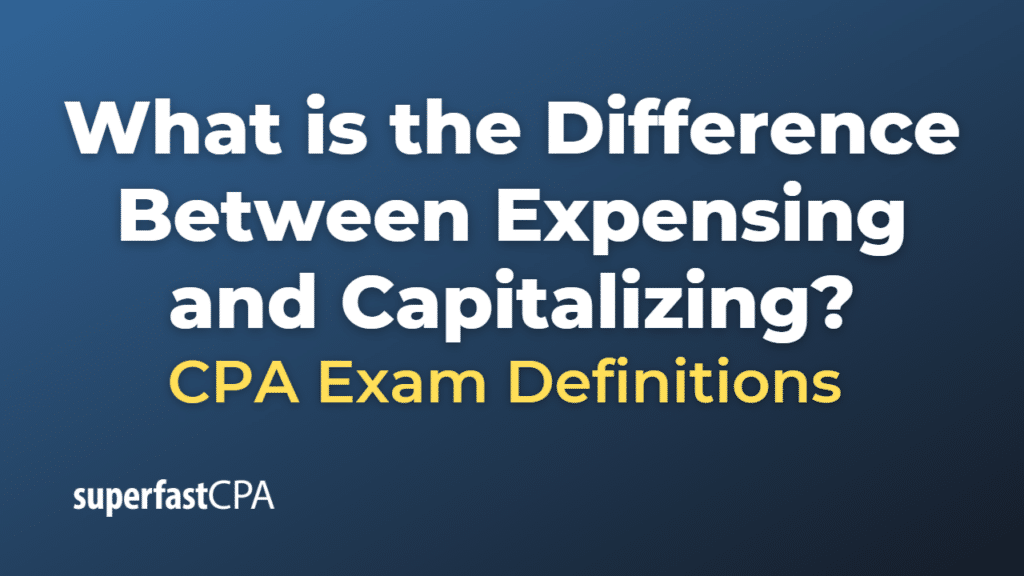Difference Between Expensing and Capitalizing
Expensing and capitalizing are two different methods of dealing with costs in accounting. Here are their definitions and differences:
Expensing
Expensing is an accounting practice where a cost is immediately charged against revenue in the current period. This means it directly reduces net income of the current fiscal period. This method is generally used for minor purchases or costs that have a short-term benefit, such as office supplies or monthly utility bills.
Capitalizing
Capitalizing, on the other hand, involves recording a cost as a long-term asset on the balance sheet. The cost is not immediately recognized as an expense. Instead, it is gradually expensed over its useful life through a process called depreciation (for tangible assets like equipment or buildings) or amortization (for intangible assets like patents or software). The idea is that these costs are investments that will provide a benefit to the company over several years.
Differences
- Timing of Expense Recognition: The key difference is the timing of expense recognition. With expensing, costs are recognized immediately. With capitalizing, costs are spread out over the useful life of the asset.
- Impact on Financial Statements: Expensing a cost reduces net income on the income statement right away, while capitalizing a cost means adding it as an asset on the balance sheet and gradually reducing it via depreciation or amortization. This difference can significantly affect a company’s reported profit and total assets.
- Tax Implications: Both methods also have tax implications. Expensing a cost reduces taxable income in the current period, providing a potential tax shield. Capitalizing a cost, on the other hand, allows the company to spread out the tax deduction over several years.
- Type of Costs: Typically, recurring, ordinary costs that have a short-term benefit are expensed, while costs that will provide a benefit over the long term are capitalized.
The choice of whether to expense or capitalize a cost can greatly affect a company’s financial reporting, and these decisions are guided by accounting rules and principles, such as those set forth by the Generally Accepted Accounting Principles (GAAP) and the International Financial Reporting Standards (IFRS).
Example of the Difference Between Expensing and Capitalizing
Let’s imagine that you run a bakery.
Expensing
On a daily basis, you buy ingredients like flour, sugar, eggs, etc. These are essential items to bake your goods, but their benefit is very short-term – they’re used up each day. Thus, the cost of these ingredients would be expensed immediately in your income statement under Cost of Goods Sold (COGS). As soon as you buy them, these costs will reduce your net income.
Capitalizing
Now, let’s say you decide your bakery needs a new industrial oven to increase production. The oven costs $10,000 and is expected to last for 10 years. Instead of recording the full $10,000 as an expense immediately (which would greatly reduce your profits for the year), you capitalize the oven as an asset on the balance sheet.
Every year for the next 10 years, you would then record a depreciation expense of $1,000 ($10,000 cost divided by 10 years) on your income statement. This way, the cost of the oven is spread out over the expected life of the asset, matching the expense more closely with the revenue it helps to generate.
This is a very simplified example, but it illustrates the basic principles of expensing and capitalizing costs in a business.













